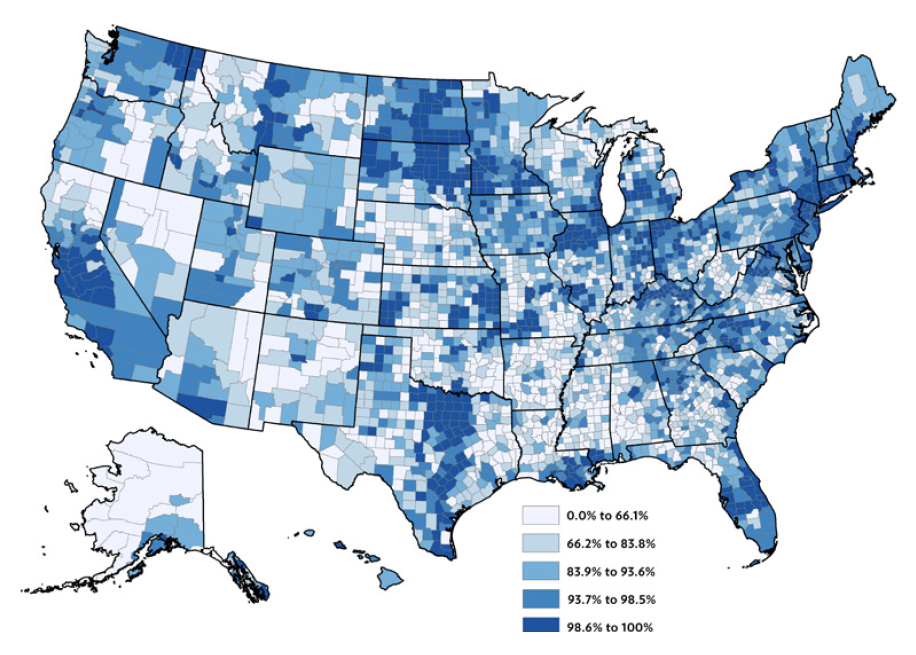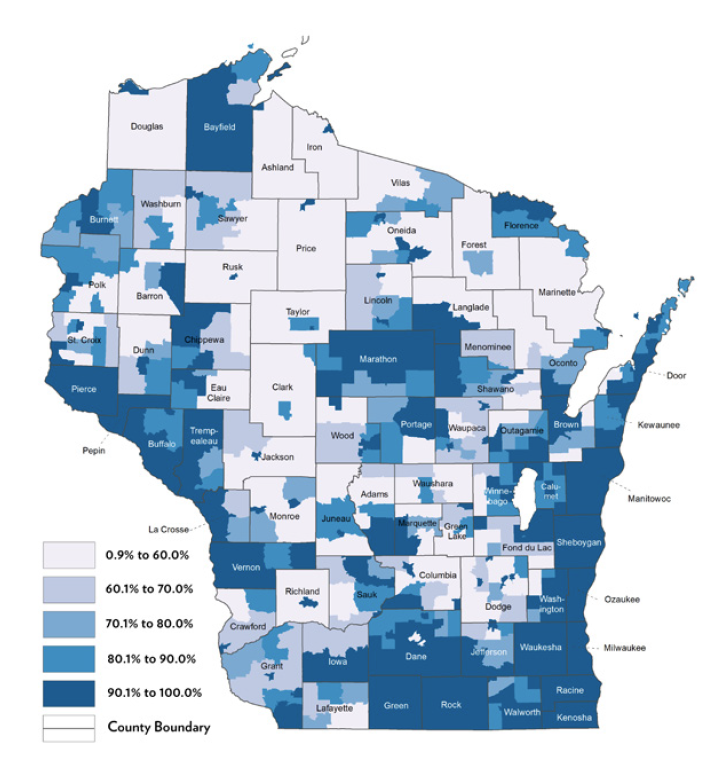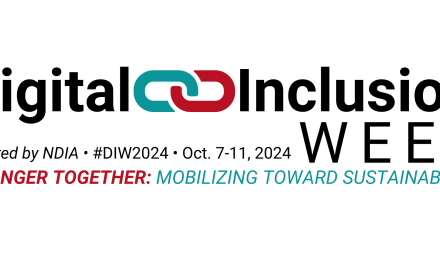As quality of life and a growing number of everyday activities depend on technology and internet access, broadband is now necessary for a community to thrive. Communities that are pursuing economic development strategies centered on quality-of-life factors are finding that inadequate broadband—either lack of access or insufficient speed—hampers their progress. That means broadband must both be available and of a high enough speed to be useful for the modern user. The Federal Communication Commission (FCC) currently defines broadband as at least 25 Mbps (transfer of “megabits per second”) of download speed and at least 3 Mbps of upload speed. Since the COVID-19 Pandemic, the 25/3 broadband threshold established in 2015 has come under scrutiny for not being adequate. FCC Form 477 data provides one means of examining access to broadband.
Form 477 data are based on internet service providers (ISPs) indicating whether they serve at least one location in a given census block despite the presence of other addresses that may not have access. Accordingly, the FCC data can overestimate access. As upload and download speeds in the FCC data are based on advertised speeds, not necessarily those reported by users, the FCC data also may not accurately reflect the 25/3 broadband threshold. Nonetheless, the Form 477 data remain important as they are often used to determine the eligibility of communities and their service providers for federal grants.
MAP 1: SHARE OF POPULATION WITH ACCESS TO BROADBAND (25/3 MBPS) BY U.S. COUNTY
Based on the FCC Form 477 data, there are broad swaths of households still without access to broadband internet across the U.S. and in Wisconsin. There are clusters of low access in the many parts of the southern U.S. (Map 1), particularly parts of the Mississippi Delta Region (e.g., Mississippi, Louisiana, Arkansas, Alabama), southern Georgia and northern Florida, along with pockets in Appalachia, western Great Plains and parts of the Mountain West (e.g., Nevada). The distribution is not surprising as access to broadband and speed tends to decline with rurality or population density, meaning households in the most remote counties are the least likely to have broadband, especially faster speeds of broadband.
MAP 2: ACCESS TO BROADBAND (25/3 MBPS) BY WISCONSIN CENSUS TRACT (JUNE 2019 FCC FORM 477 DATA, NOT INCLUDING SATELLITE)
Population density is also a factor in understanding broadband access in Wisconsin (Map 2). Lower access to broadband is found throughout the less populous northern portion of the state that features smaller communities, seasonal tourism, and recreation. Geography can also play a role in broadband availability due to its effect on infrastructure costs. One explanation for the difference in access may be topography or terrain.
Low density and challenging terrain can lead to a lack of infrastructure that helps explain the areas that lack sufficient access to broadband. Accordingly, these areas may want to prioritize strategies and policies that encourage the development of physical resources needed to provide access. While the presence of necessary infrastructure is vital to broadband availability, access to broadband does not necessarily mean that a household has broadband service as households may choose not to subscribe for personal or financial reasons. Some regions may need to couple programs focused on education and affordability alongside their efforts to build infrastructure in order to effectively expand broadband.
This work was supported by a grant from the United States Department of Commerce Economic Development Administration in support of Economic Development Authority University Center. Any opinions, findings, conclusions or recommendations expressed in this material are those of the authors and do not necessarily reflect the views of the U.S. Department of Commerce Economic Development Administration.

















